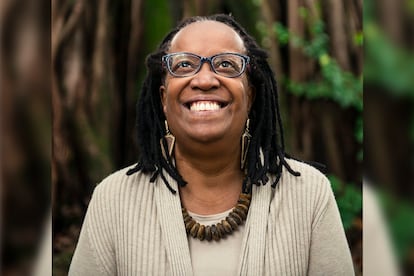EL PAÍS openly offers the América Futura column for its daily and global informative contribution on sustainable development. If you want to support our journalism, subscribe Here.
What happens when a racist tweet is replicated hundreds of times, your social networks are flooded with insults, and your media management or people close to you ask you to “calm down”? For many Afro-descendant journalists, communicators and content generators in Latin America, digital harassment is not an isolated event: it responds to a systemic logic that punishes our voices. Yet, this violence remains unnamed or unaddressed by media, platforms, or public policy.
Harassment at work and in digital spaces operates as a regime of intersectional violence – racism, sexism and classism – that begins even before the practice of journalism, affecting access to training, opportunities and networks. It does not stay outside the schedule: it interrupts rest times, interferes with the right to care and integral health, disorganises life plans, weakens individual and collective security and limits political participation.
Everything happens on a level of structural inequality: according to the gender indicators of ECLAC-UN Women in 2023, there are 118 women in poverty and 120 in extreme poverty for every 100 men, with particularly marked impacts among Afro-descendant and indigenous women, a reality that requires global responses, beyond punitivism and the assistance budget. It is in this context that Repcone – Digital Protection Network of Black Communicators, promoted by the Rede de Jornalistas Pretos (Network of Black Journalists) – consolidates itself as an essential space. It is not enough to say that networks of journalists already exist; We need to build one that ensures safe and dignified conditions for Afro-descendant communicators, with protocols that name racism and its intersection with sexual and digital harassment.
What we cannot ignore
The ability to disaggregate digital harassment against Afro-descendant women in our countries remains limited, but we have evidence of digital violence against women journalists in general when the intersection of work and platforms is made.
A study by UNESCO in collaboration with the International Center for Journalists (ICFJ) documents that 73% of female journalists interviewed have experienced online violence related to their work (including sexual threats and coordinated campaigns). And, in terms of racial disproportionality, the Troll Patrol project (Amnesty International/Element AI) showed that black women were 84% more likely than white women to be mentioned in offensive or problematic tweets.
Globally, the first survey conducted by the International Labor Organization (ILO) in collaboration with Gallup confirms that more than one in five employees have experienced violence or harassment at work in their lifetime, with higher rates among young women, migrants and groups affected by discrimination based on gender and race/skin color. In other words: intersectionality matters.
And what does this mean in a country like Peru?
Although the Peruvian state has a relevant regulatory framework – such as the Regulation of Law 27942, which recognizes sexual harassment even in digital environments, and the ratification of ILO Convention 190 –, the path to prevent, punish and redress digital violence remains vague. Impunity persists.
The National Afro-Peruvian People’s Policy 2030 recognizes that structural racism limits the autonomy of people of African descent, particularly women. In this framework, the media are not neutral: they can reproduce stereotypes or marginalize voices, but they can also become spaces of dignified representation and defense of rights.
Without safe working conditions, access to care or protection against digital harassment, the participation of Afro-descendant women in the communication ecosystem is limited, especially when the proposal is to be a critical voice in a profoundly unequal and discriminatory society. The State must ensure environments free from racial and sexist violence, institutions with a gender, racial-ethnic and intersectional focus; where a specific public budget is guaranteed to guarantee our autonomy – even in the symbolic and media sphere.
From statements to actions
Recognizing that racism and sexism are structural does not absolve the state or institutions from acting now. As several voices of African descent point out, including authors like bell hooks and Sueli Carneiro, naming what violates us is only the first step.
From my experience as an Afro-Peruvian communicator and journalist, I have experienced firsthand the multiple forms of harassment that intersect racial and sexual issues. It is not just symbolic violence, it is a concrete violation of our body, our mental health and our possibility of inhabiting public space.

To prevent, protect and transform we propose some specific paths:
- Protocols that name racism and its intersection with sexual harassment. Institutional policies must abandon abstract gender approaches. ILO Convention 190 offers a clear framework, but it needs to be operationalized with an intersectional approach and a specific budget.
- Recognize the digital environment as a space of work and risk. Violence on social networks is not “unrelated” to the work of racialized communicators. Internal mechanisms are needed to report racially or gender-motivated digital attacks, as well as moderation, evidence recording, emotional containment and legal protection.
- Psychological and legal support with an anti-racist approach. Support for victims of harassment must recognize the structural impact of racism on mental health. This involves trained professionals, legal resources, reasonable accommodation and disaggregated data systems.
- Diverse and active institutional leadership against violence. It is not enough to talk in the face of a crisis: we need leadership that acts, sanctions, prevents and – above all – reflects the diversity of those who communicate. The absence of Afro-descendant, indigenous, trans, disabled people, among others, in decision-making spaces perpetuates impunity and reproduces a culture of complicit silence.
Also our right to communicate without being violated
The path of Afro-descendant and black women in communication usually begins with an intimate decision: to study, practice journalism or create content – on traditional or alternative media – even without references to look at. It continues when we knock on doors that close again and again in a society that racializes and dehumanizes us. And it persists when, once inside, we must constantly demonstrate our professional capacity… and also our humanity. All this while we face the digital, racist and sexist violence that seeks to silence us.
Giving that journey a name is important. Not to romanticize it, but to recognize its costs and reclaim what we weave together: networks of care, protection and support that allow us to continue to inhabit public space with dignity.
A digital safety net for Black communicators is not just a professional structure: it is a political response. A space that validates lived experience, prioritizes collective self-care, and articulates strategies against the structural racism that crosses our trajectories: in newsrooms, in social networks, and on every platform where we exercise the right to communicate.
Audre Lorde said it clearly An explosion of light: “Taking care of myself is not self-indulgence. It is self-preservation. And that is an act of political warfare.”
Today we can say that we are more and we are crossing the borders – geographical and symbolic – that we encounter, we name, we protect. And we no longer accept this pleases institutional voids or silences. We demand anti-racist networks, public policies that recognize and sanction digital harassment with an intersectional approach, and dignified conditions to practice journalism without having to sacrifice rest, mental health or physical integrity.
We continue to resist. We are writing our history in the present.
With your voice. Collectively.



